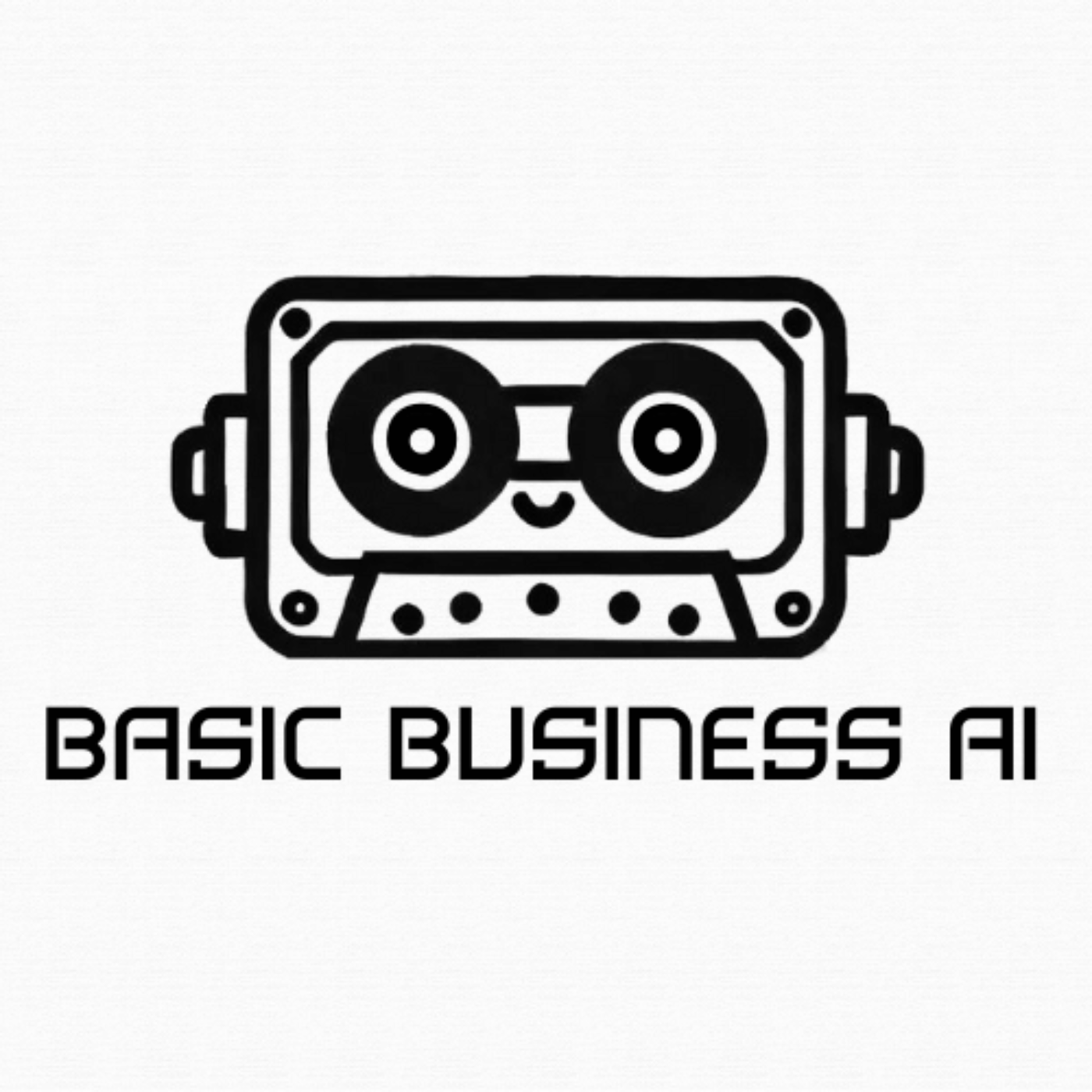Episode Transcript
[00:00:00] Speaker A: Welcome to Basic Business AI, a podcast dedicated to simple AI strategies for businesses who don't want to get an advanced tech degree or hire some marketing bro. I'm your host, Ana Gonzalez, and you can find me on social media at anabotprime. We bring on regular business owners like you and me to discuss practical strategies, ideas and perspectives about AI without getting too far into the weeds of the tech bb. AI is sponsored by annabots. Did you know companies that respond to customer inquiries in less than 1 minute have a 400% higher chance of closing the deal? Our AI powered assistants have an average response time of just 5 to 7 seconds, meaning you can close more sales without generating more leads.
No tech skills are needed and you can get started in less than five minutes. Go to annabots AI to learn more. Once more, that's annabots AI. Today's guest is Josh Sanabria. Did I say it right?
[00:01:00] Speaker B: Actually, you did, yeah.
[00:01:02] Speaker A: Josh Sannabria, CEO of GO Architect, is a visionary leader who uses design and technology to help transform the way communities plan and build their future. So, Josh, welcome to Basic Business AI.
[00:01:16] Speaker B: Great, thanks, Hannah. Thanks for having me.
[00:01:19] Speaker A: Amazing to have you. So from your perspective, how is AI reshaping the future of your industry?
[00:01:27] Speaker B: Sure. So it's actually a complicated answer because I work in architecture, which has all kinds of things underneath it. You can think of construction, project management, obviously design, design iterations, which of course is a pretty popular topic right now with image generation, AI tech, of course, the technical aspects of like, engineering, creating floor plans, all that kind of stuff. So there's no chance I could answer all of them. I would say, though, that the impact, or at least potential for impact, is pretty high. And all of the things I just listed, and probably many more that I would never even think of.
[00:02:11] Speaker A: Wow. So let me tell you, I'm very curious.
This is something that not a lot of people know about me. Maybe. I don't know. I used to be an architect.
I graduated in Mexico City for architecture, and then life, just life brought me to other places.
[00:02:29] Speaker B: Interesting.
[00:02:29] Speaker A: Okay, so I'm very curious because I haven't worked in architecture for a while.
[00:02:35] Speaker B: Yeah.
[00:02:36] Speaker A: What are some practical applications for architecture that you use AI with?
[00:02:43] Speaker B: Yeah, Well, I think the ones that are probably most helpful are formulaic equations or formulaic designs that don't necessarily need a lot of human input. So I'll give you an example. If you have a site like I live here in Chicago, you have a site, and that site is, you know, $20 million.
[00:03:14] Speaker A: Right.
[00:03:14] Speaker B: It's a very expensive piece of land in a major city, you want to obviously make sure that you're going to use that land to its maximum possible potential. And so nowadays there's a few software options for plugging in that land. It will attach a geography location to it. It will maybe even automatically take in all the zoning requirements, and it will give you, or it will generate some, we'll say, more financially secure design options for what that land could do and that generation of what's far. It's a floor area ratio, for example, how many units or how much square footage you can have on a specific piece of land.
Of course, zoning, of course, simple things like where's the sun? Or, you know, different environmental concerns. That is all information that you need prior to designing the actual building, the actual spaces or apartments or offices. That is, I would consider that kind of baseline information.
So an AI tool can help you generate that baseline information. It can give you parameters, sometimes it can help you figure out that the parameters aren't going to work and you need to go after variances or changes to zoning, for example.
So that's a. That's a pretty straightforward one.
You know, there's the. We'll say the Instagram version where you generate some AI additions of a room or a space.
Yeah, that one's actually not as helpful as you might assume it is. But there's like, again, like I said in the beginning, I mean, there's all kinds of ways that it will impact or in the future will impact.
[00:05:13] Speaker A: Oh, wow. You know, I was talking with a friend from an architect friend a few months ago, and I was looking for someone who would help me make renders. Like 3D renders.
[00:05:27] Speaker B: Sure.
[00:05:28] Speaker A: And because I wanted to hire someone, and he told me, why do you want to hire someone? AI can do it like nobody's doing it because I can do it now. And I was, like, stoked, because, let me tell you, I come from that time where plans were, like, with your hands drawn and revit was starting to be a thing I just gave away with my age.
But it's super interesting to hear what all the advancements that you're talking about, like, other than, oh, AI is just making the 3D renders now. Like, all the advancement. Advancements of that. You're talking about zoning and every single thing that used to require human calculations that also could have a margin of error that could be deadly.
[00:06:29] Speaker B: Yeah, I mean, I would say I would tone it down from deadly to more inconvenient. Right. And to be honest, I think AI is at the point where it's at least an architecture specific, I would separate it from what a person wants to post on Instagram or wants to maybe send to an architect as a kind of inspiration about. I would put that in one column and then I would put the actual architecture in a different column. So I'll give you an example. We did a project where we were thinking about the future of a train station and we had some basic parameters, we had a basic design in terms of like what it should include, where things would go.
Let's call it a rough draft. And just for fun, we put images of that rough draft into an AI rendering tool.
The dramatic answer is what that AI rendering tool came out with was almost worthless because it just it, to use kind of an AI term, it hallucinated details or hallucinated elements that were just didn't make sense, were not actually constructible, were so beyond the potential budget for this building, didn't represent the actual physical realities of the material that it was trying to represent.
So yeah, they can look interesting and maybe they can. Well, not maybe they can definitely spark ideas, but from a practical, actual usability standpoint, they're pretty minimal at this point at least. I mean, we had literally one rendering talking about prompt engineering. We were detailed or simplistic and everywhere in between. And one rendering literally came out where the train station was a train.
Like the actual building was this like metro looking, you know, bus train combo that had like huge windows and was orange. And I was thinking, I was like, I mean, maybe if we were like in Disneyland, the train station would be a train.
But like on a realistic level, like, this is worthless at this point, you know, like, so I, I think there's a huge difference between a. I would call like an enterprise level application and then kind of your Instagram application of AI in architecture.
[00:09:29] Speaker A: Right, I can see what you're saying. And also that, that reminded me of. There's an image around Internet from someone who wanted a picture. Like they made a picture with AI and they wanted a salmon and the river.
And lo and behold, have you seen it? It's the river and then a salmon fillet in the river.
[00:09:54] Speaker B: Right.
[00:09:55] Speaker A: That's where. That's where like artificial intelligence is not that intelligent if you do not use the right inputs.
[00:10:04] Speaker B: Yeah, it definitely is dependent on inputs.
And you know, at some point maybe it will have. There'll be some architecture design, rendering specific tool where it does have a slightly better concept of the physical limitations of materials like brick or wood, things like that, where it can say oh, that shape in the real world with gravity is not actually possible.
But, you know, who knows, right? It might come. We'll see.
[00:10:35] Speaker A: Right. Well, I loved what you shared about that tool to, like, determine the zoning and everything in between. But, yeah, we.
So, Josh, tell me, tell me about who you serve and how people can reach out to you.
[00:10:53] Speaker B: Yeah, so we mostly serve civic governments, school districts, basically large groups that are looking to plan for the next 10, 20 years of development.
So we do a lot of what's called master planning. So it's this small corner of architecture where we don't necessarily design the building. We maybe hint at what the building is or what it should include, or certainly where it should go, but then the actual design comes later. We're more helping you plan ahead, help you pay for it, help you kind of figure out how it's going to address the needs of a community. And then honestly, a lot of that is community outreach, surveying, listening to the community and then taking that information, whether it's qualitative or quantitative. Right. So if it's qualitative, it's just people typing in their responses or verbally saying their responses.
So the AI application with that one might be taking, you know, a hundred different responses where people just typed what they want, put it through an AI and try to provide some kind of summary or highlights list. And then on a quantitative, where people are maybe rating something one to five stars, you know, what are the ratings telling us? Maybe how do the ratings correlate to what the text is saying? That kind of stuff. So we do a lot of that data analysis, but also the physical community outreach.
[00:12:33] Speaker A: Awesome. And how can people reach out to you?
[00:12:36] Speaker B: So they can go to goarchitect.com and they can learn more about us if they want to use actually one of the community engagement tools that we've made. It's called Engage. Very creative. I know.
So engagebygo.com so engagebygo.com and they can check that out for free also.
[00:13:00] Speaker A: Perfect. So we're going to run from here. Thanks to our guest, Shosha Nabria, for joining us for a practical conversation about AI and its potential for business. You can learn more about what he does by visiting goarchitect.com or engage by go. Com. If you run a business of any size and you have some ideas or strategies around the topic of AI, we'd love to have you on for a future episode as well. We interview business owners of all levels of experience and exposure to AI. So we can represent all voices, especially the 90% of us who are curious about AI but not trying to be tech geniuses, apply for a future episode by going to basicbusinessai.com and one more time, if you want to install a 24.7ai sales and support 14 for less than 10% of the cost of a single employee, get yourself an Annabot. Learn more at annabots AI. See you next time on Basic Business AI. Oh, and by the way, if you like this episode, tell your friends. See you later.



